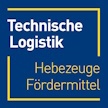
People responsible for air cargo working in export-oriented companies of commerce and industry and transportation service provider.
Edition 2007
| 272 S., Softcover |
| 148 x 210 mm |
| Edition/Auflage 2007 |
| Artikel-Nr.: 22602000000 |
|
Table of Contents 1 The Development of the Air Cargo Industry 2 Characteristics of the Air Cargo Business 3 Regulatory Framework and Liberalization 3.1 Air Service Agreements 3.2 Conventions 3.2.1 Chicago Convention 3.2.2 Freedoms of the air 3.2.3 Montreal Convention 3.3 European Legislation / Agreements 3.4 Other Agreements / Regulations 3.4.1 Dangerous Goods Regulations 3.4.2 Regulations for temperature-sensitive goods 4 Associations and Organizations 4.1 International Associations and Organizations 4.1.1 International Civil Aviation Organization 4.1.2 International Air Transport Association 4.1.3 Airports Council International 4.1.4 The International Air Cargo Association 4.2 European Associations and Organizations 4.2.1 European Civil Aviation Conference 4.2.2 European Organization for the Safety of Air Navigation 4.2.3 Association of European Airlines 4.2.4 European Regions Airline Association 4.3 Other Institutional Bodies 4.3.1 Federations 4.3.2 Agencies 5 Environment for infrastructure in the Air Cargo Business 5.1 Transport Equipment – Load Devices 5.1.1 Air Cargo Pallets 5.1.2 Air Cargo Container 5.2 Transport Vehicles – Means of Transportation 5.2.1 Feeder Services 5.2.2 Main Transport Mode 5.3 Ground Service Equipment (GSE) 5.3.1 Truck loading and unloading 5.3.2 Acceptance, build up and storage 5.3.3 Aircraft loading and unloading 5.4 Warehouse and handling facilities 6 Air Cargo Management 6.1 ctivities within the Supply Chain 6.1.1 Export or outbound traffic 6.1.2 Import or inbound traffic 6.1.3 Safety and Security 6.1.4 Interfaces 6.2 Players within the supply chain 6.2.1 The Airports 6.2.2 The Airlines 6.2.3 The Forwarding Agencies 6.2.4 The Integrators 6.2.5 Other Players within the Supply Chain 6.3 Documentation 6.3.1 The Air Waybill 6.3.2 Shippers Declaration of Dangerous Goods 6.3.3 Special Load Notification to Captain (NOTOC) 6.3.4 Further necessary documents 6.4 The Quality of Management 6.4.1 Key Performance Indicators 6.4.2 ISO Certificates 6.4.3 Cargo 2000 6.4.4 IATA e-freight 7 Strategies in the Air Cargo Industry 7.1 The Strategy of Hub and Spoke Systems 7.2 The Strategy of Cooperation 7.3 Product Strategy 7.4 The ACMI-Strategy 8 Information and Communication Technologies 8.1 Information Systems – Integration or Harmonisation 8.2 Customer and Market Requirements 8.2.1. Tracking and Tracing 8.2.2 Internet and E-Commerce 8.2.3 E- Documents 8.2.4 Linked Authorities 8.2.5 Cargo Account Settlement System (CASS) 8.2.6 An Example of a Cargo Community System: TRAXON 8.3 E-Commerce of Integrators 9 Pricing Strategies and Tariff Structures 10 Economic Efficiency 10.1 Airfreight in Comparison to other Modes of Transport 10.2.1 Air / Sea Transports 10.2.2 Road Feeder Services (RFS) – an alternative? 11 Aviation and Environment 11.1 The Land use 11.2 Noise Exposure 11.2.1 Night Curfews 11.3 Emissions 11.4 Measures for the Reduction of ecological damages List of Abbreviations List of Figures and Tables Sources Annex Convention for the Unification of Certain Rules for International Carriage by Air Index |
| Verwandte Artikel |
| Leitfaden Luftfracht [Buch] |
| Taking Off - Does Electronic Documentation Make Air Cargo Fly High Again? [Buch] |
| Weitere Informationen zu folgenden Themen: |
| LOGISTRA-Buchtipps- (2) |